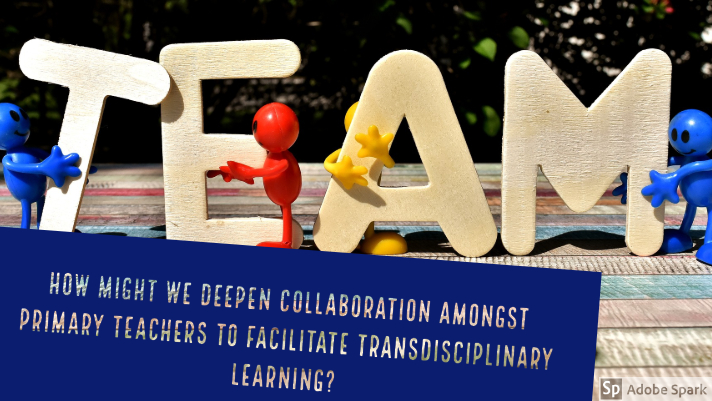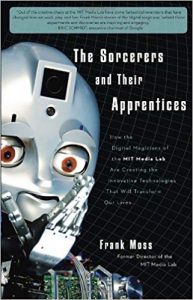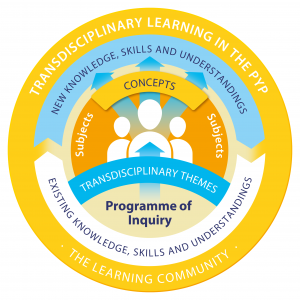Just prior to the January Face 2 Face meeting for Cohort21 I revised my How Might We… question. I realized that, although I was interested in exploring teacher collaboration more deeply, I hadn’t been explicit about why. In a short discussion with Adam Caplan it became obvious that the reason I feel so strongly about collaboration is because it makes it easier to teach in a transdisciplinary way.
Lisa Bellanger helped me with the 5 Whys protocol with in which she asked me 5 questions beginning with “Why…” to get me to think more deeply.
I felt like I had clarified my thinking significantly until I connected and shared with Eric Daigle and Lisa Mitchell... They really pushed me to clarify why transdisciplinary learning and teaching is important. To that end, hI have been doing some thinking…
In his book Consilience: The Unity of Knowledge, E. O. Wilson states that,
“The greatest enterprise of the mind has always been and always will be the attempted linkage of the sciences and humanities. The ongoing fragmentation of knowledge and resulting chaos in philosophy are not reflections of the real world but artifacts of scholarship”.
He cites consilience as,
” a ‘jumping together’ of knowledge by the linking of facts and fact-based theory across disciplines to create a common groundwork of explanation.”
Although he speaks more of the ability to reduce divergent fields to “a small number of fundamental natural laws”, when I first read this book 18 years ago I was struck by how what seemed like disparate fields converged around real-world issues. Thus, solving real-world issues may involve an understanding of multiple fields of research. For example, experts in the fields of environmental policy, ethics, social sciences and biology (among others) may all have something to offer by way of finding solutions to deforestation.
More recently, I read The Sorcerers and Their Apprentices: How the Digital Magicians of the MIT Media Lab Are Creating the Innovative Technologies That Will Transform Our Lives by Frank Moss the former director of the MIT Media Lab. As stated on Amazon,
“Moss reveals the highly unorthodox approach to creativity and invention that makes all this possible, explaining how the Media Lab cultivates an open and boundary-less environment where researchers from a broad array of disciplines – from musicians to neuroscientists to visual artists to computer engineers – have the freedom to follow their passions and take bold risks unthinkable elsewhere.”
In one vignette he describes how a team with backgrounds in behavioural psychology, computer science and mathematical modelling won the DARPA Red Balloon Challenge despite only becoming aware of the challenge to locate 10 red balloons across the United States four days beforehand. Each member brought unique insight and skills to solving the problem.
Moss cites that it is,
“only by ignoring the existing artificially imposed barriers between disciplines can we ‘completely change the frame’ of the discussion and pose questions that no one has ever thought to ask before, including – maybe even especially – the so-called domain experts.”
In a world grappling with multi-dimensional issues, breaking down the silos between disciplines allows us to consider solutions from multiple perspectives.
A transdisciplinary approach has been at the heart of IB-PYP schools since the programme’s inception. Although rooted in a transdisciplinary approach, there is an understanding that in order for this to happen some subject-specific knowledge, skills and understanding is required. However, rather than developing an encyclopedic knowledge of facts, the whole is worth more than the sum of its parts and there is focus on exploring broad, transferable concepts, skills and understandings. Broad exploration of themes from various perspectives illustrates the interconnectedness of ideas and is more reflective of how the world works. Some key take-aways I discovered while reviewing their documents included the following:
- The IB-PYP is for learners age 3-12. Young children have no regard to subjects delineations. Rather they have questions and naturally explore their questions through play and discovery. As they make discoveries, connections are made. The role of the teacher is to create opportunities for discovery and to make connections explicit.
- Transdisciplinary teaching conveys that learning has relevance between, across and beyond classroom subjects and connects them to the “real world”.
- If students learn to think like a scientist, historian, artist, mathematician, etc. these perspectives can be applied to approaching complex problems. In this sense, subjects become an instrument/ tool/ resource to explore a theme, problem or concept in depth.
- By acknowledging that multiple fields and perspectives can be used to solve problems, we learn that exploring diverse approaches can be advantageous. This strengthens our learning community because everyone has a voice.
- There is plenty of time for developing a deeper understanding of disciplines as learners move through the grades.
In order for all of this to happen, collaboration is required to make connections between different subject areas and classes.




Congratulations on this post, Lara! Thinking outside the
‘artifice of scholarship’ boxes are a return to the way knowledge exists in the real world, and your appetite for collaboration speaks to your passion for authentic, deep learning.
Thanks for including me as part of your process.
Thank YOU for being a part of my process @adamcaplan and cheering me on. Happy to chat about “authentic and deep learning” any time!
Your appreciation for diverse perspectives in learning is evident, Lara. As you say, there is much to learn from one another – across, among, and between subjects and classrooms. Thank you for emphasizing the importance of collaborative professionalism. See you soon!
Hi Lara,
I loved your insight that our students don’t naturally see the lines between these different disciplines. This is something that “Education” instills in them. I wonder how we might unlearn this…
I think that experiential learning and reflection can play an important role in answering this question. I’m working on a project for next year that you’ve helped to inform.
Much appreciated,
Garth.